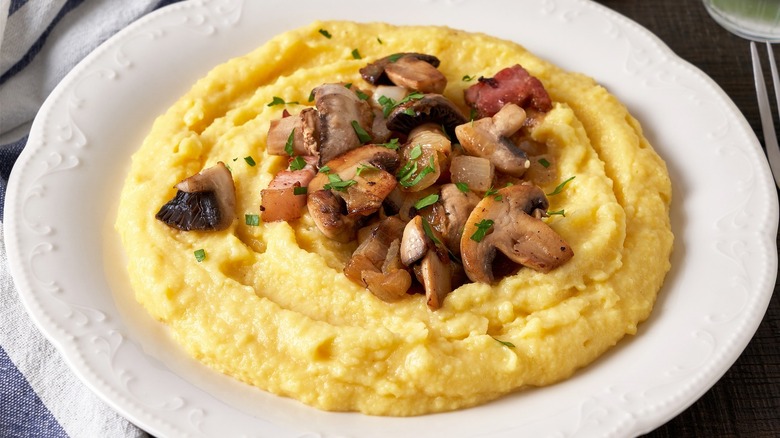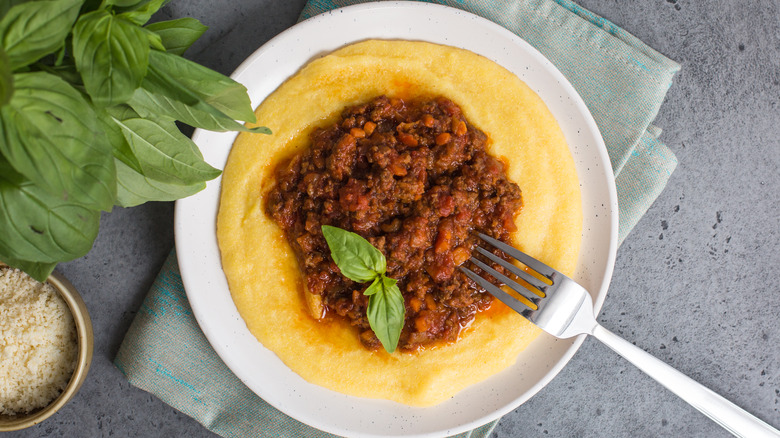If You Want Creamy Polenta, Take The Heat Down A Notch
Once a derogatory term for Northern Italians, "polenta-eater" is now a title we'd proudly don at any given meal. Made from medium to coarsely ground grains, polenta is most commonly prepared with yellow cornmeal simmered into a porridge.
Similar to how we enjoy pasta, polenta is a blank canvas for sauces like a ragú, braised meat, roasted vegetables, and sautéed greens. It can be eaten firm as a fry or round, pan-fried and topped with sautéed mushrooms like a crostini, for a delicious hand-held appetizer. However, served soft and creamy, a bowl of polenta is the ultimate comfort food.
Short of using instant polenta that's finely ground and doesn't have the same mouth feel, authentic polenta requires 45 minutes of cooking, which is perhaps why we don't have it often enough. Traditionally polenta, like risotto, demands constant whisking to keep the grains from burning and getting lumpy, monopolizing all your time; but that's about to change.
For creamy polenta, bring five cups of liquid to a boil. This can be water, milk, or broth. Once boiling, remove the pot from the heat source and slowly whisk in one cup of medium to coarsely ground polenta or cornmeal, stirring until the porridge comes together and slightly thickens. Place the lid on and go about your business. After 45 minutes, the grains should be swollen and tender. Give it a good stir, add some butter and freshly grated parmesan cheese, and enjoy.
Avoid instant or quick-cooking polenta
Authentic polenta is made with an heirloom variety of corn from Italy called eight-row flint, or otto file. It has a deep yellow color and develops a sweet, intense flavor when cooked. Although polenta can be made with different textures and colors, seeking authentic polenta will produce a superior mouth-feel and taste and is worth the effort.
If your supermarket runs out or doesn't carry polenta, medium to coarsely ground yellow cornmeal can be substituted. It is milled differently than polenta, so the results won't be exact, but it is still delicious. Familiar throughout the South, grits are cornmeal made with white corn or hominy. Grits have a finer texture, so avoid substituting that for polenta. Same for "quick-cooking" or " instant" polenta, which is over-processed and inferior tasting.
Instant Pot lovers can make polenta using the pressure cooker setting. Combine 3 cups of water, 1 cup of cornmeal, 4 tablespoons of butter, and 1 teaspoon of salt, and set the Instant Pot for 20 minutes. Release the valve, whisk the cooked polenta, and adjust the seasoning with kosher salt and pepper. It's that simple.
Add Italian mascarpone or cream cheese to the finished dish for extra-creamy results. Leftover polenta can be stored in the refrigerator for up to five days. It will mold to the shape of the container, so spread the grains in a shallow pan if you want to pan-fry the leftovers in olive oil later in the week.

